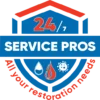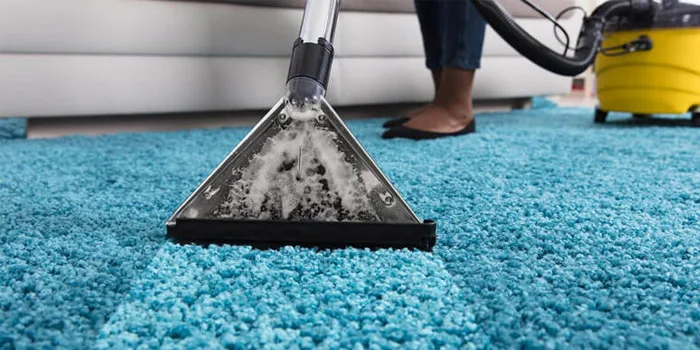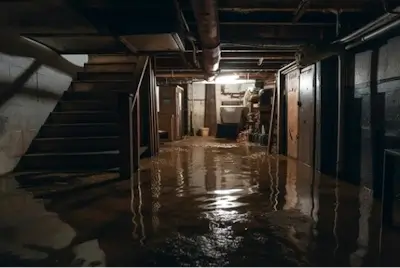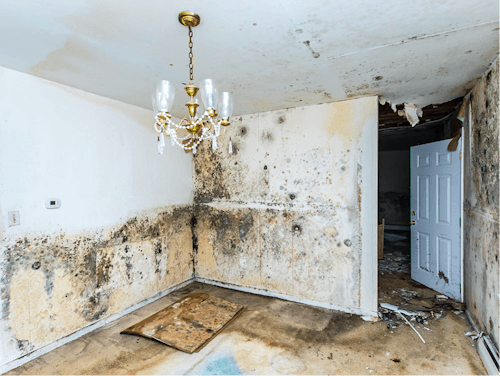A roof leak can cause a lot of inconvenience to the people who live under it as it can pass through from the top to the foundations of one’s home. If left as it is, it can cause severe damage to the roof as well as other parts of the house that might damage the structure of the house as it can rot and decay.
One of the first places where the water leak will travel is to the attic and the ceiling. The disadvantage is that attics play an important function in home systems such as heating, air conditioning, etc.
If it is exposed to water then there is a high chance that the systems will fail and might increase the possibility of fire hazard as well.
Home insulation and drywall are also not safe from the dangers of roof leaks as they enable mold and mildew to grow and simultaneously weaken the rafters and ceiling joists.
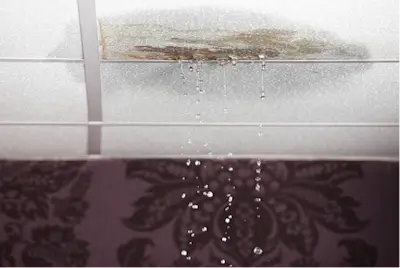
Signs of a Roof Leak
To detect roof leaks, there are some obvious signs that one should look for, for example:
- Water dripping from the ceiling
- Stains left by constant water leakage on walls and ceilings
- Musty smells or moldy odors
- Damaged or missing roof shingles
- Damaged interior wall
- Damp external wall
- Sagging ceiling
- Rusted pipes
- Excess condensation on windows and metal objects in the house
- Damage Flashing
Does a Roof Leak Cause Mold Growth?
Yes, roof leaks can become a cause of ceiling or wall mold. Any leaks in the roof will lead to moisture buildup in the ceiling and walls. When there’s excess moisture, the mold will grow rapidly. Mold is one of the signs of a roof leak. Water trapped inside the ceiling and the walls has no way to evaporate.
When the temperatures slightly rise, the humidity and warmth will create a favorable environment for mold growth.
Tips to Identify a Roof Leak ?
To identify a roof leak, you need to look for signs. In case you suspect a roof leak but see no obvious signs, or cannot pinpoint the location of the leak, you do the following:
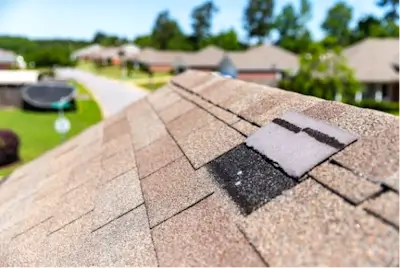
Attic Inspection
If there’s a roof leak, the water is getting to the attic first. You should closely examine the rafters and roof sheathing. Look for signs of water damage such as a musty smell, softened wood, rusty pipes, and damp spots.
The surface of the Roof
You need to get to the roof and see for any damage. If there’s a crack, holes, missing shingles, or missing screws, these are the places where the water is getting in from. You will have to fix these issues so that water does not seep into your ceiling.
Ask for Help
If you have tried everything and still can’t locate the leak in the roof, you need to seek professional help. Talk to water damage restoration company like 24/7 Service Pros and ask for a house visit. They will help you locate and fix the roof leak.
How to Fix a Roof Leak?
The first step is to locate the roof. Once you know which spot is causing water damage, you can begin repairs. However, dealing with roof leaks is dangerous. The chances of injuries and falls increase in these jobs. Seek professional restoration help if you’re not properly trained. Always wear protective gear when dealing with water damage.
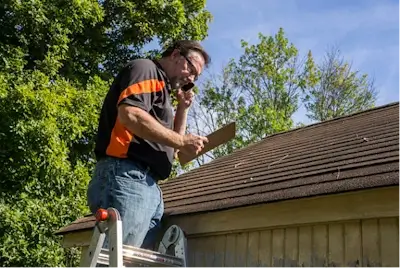
Locate the Roof Leak
Locate the roof leak by examining the spot right above the damaged ceiling. If that’s not the spot, you will have to dig further to find the spot. Observe the shingles and roof fixtures. Anything missing, broken, or displaced is your sign.
Remove Damaged Shingles
If the leak is coming from damage to the roof deck, you’ll need to remove shingles. Mark out the damaged spot and start removing the shingles. You can use a pry bar to detach the shingles. Remove the roofing paper to remove the shingles. Once the shingles are removed, outline the damaged deck area that needs to be cut out.
Remove Damaged Roof Deck
Cut out the damaged deck. Pull out the nails and screws holding the deck down. Once you’ve removed the deck you can now directly see and access the damaged parts of the roof.
 Fix or Replace Damaged Rafters
Fix or Replace Damaged Rafters
Look for damage and cut out all parts that are damaged. You will need to fix any leaking pipes as well. After you or your plumber have fixed the water-damaged areas, it’s time to put everything back together.
Put Everything Back
After fixing the damage underneath, you need to measure and cut out new roof sheathing. Once the roof sheets are replaced, you need to cut out a new piece of the roof deck and fix it in place of the old one you had cut out.
Install New Shingles
After you have replaced the roof sheet and roof deck, it’s time to lay down new shingles as well. Read the instructions that came with the shingle box and follow them when installing. Poor installation will lead to water leakage again. So, you must follow the instructions given by the seller or on the box.
Tips to Prevent Roof Leak
Preventing a roof leak only requires good installation in the first place. You have to maintain the health of your roof for longevity. Take following tips as guiding steps to prevent a roof leak:
- Fix the shingles properly
- Install roof sheeting
- Fix the roof deck properly
- Insulate and seal the pipes
- Waterproof the rafters
- Avoid faulty plumbing
- Fix cracks in the roof immediately
- Install new screws in places where they’re missing
- Timely replace the broken or warping shingles
When to Call 24/7 Service Pros?
Roof leaks can cause a lot of damage to the structure of your home, from attic to foundation. Recognizing the signs early can prevent extensive damage. If you notice water dripping, stains, musty odors, or damaged shingles, act immediately. Ignoring these signs risks mold growth, compromised structural integrity, and even fire hazards.
If you do not have plumbing or labor skills, or never fixed a leak before, don’t hesitate to call 24/7 Service Pros for help.
Which Areas We Serve in South Florida?
- Hollywood
- Davie
- Miami Beach
- Weston
- Hallandale Beach
- North Miami Beach
- Sunrise
- Tamarac
- Coconut Creek
- Fort Lauderdale
- Miami
- Boca Raton
- Hialeah
- Margate
- Pembrock Pines
- Dania Beach
- Lauderhill
- Delray Beach
- Pompano Beach
- Deerfield Beach
- Coral Springs
- Plantation
- Doral
- Aventura
- Miramar
- Sunny Isles Beach
